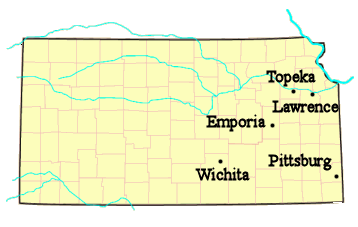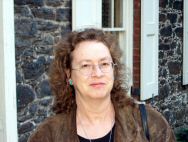|
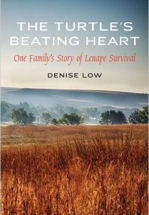
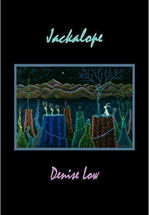
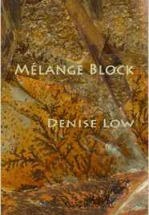
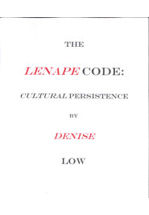
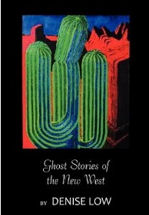
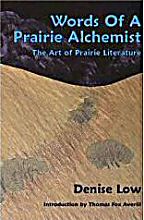
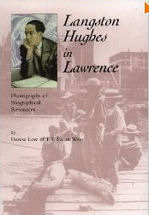
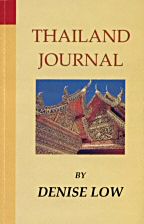
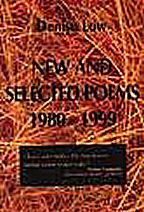

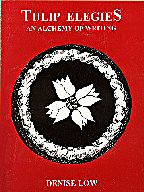
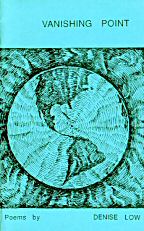
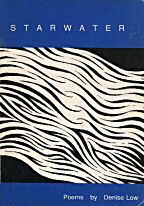
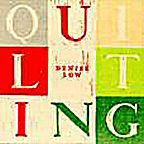
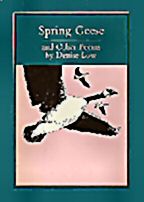
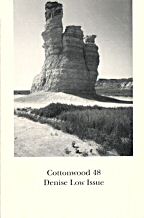
Edited by Denise Low
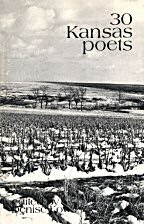
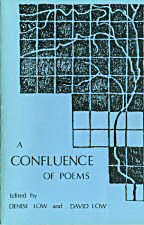
|
|
Biography |
Broadsides by Low: |
| |
Denise Low grew up in Emporia,
Kansas. She received bachelor’s, master’s, and
doctoral degrees from the University of Kansas in English, and an
MFA in creative writing from Wichita State University. She
has published ten books of poetry and essays and received awards
from the National Endowment for the Humanities, Lannan Foundation,
Kansas Arts Commission, Poetry Society of America, Roberts Foundation,
The Newberry Library, and the Lawrence Arts Commission.
She has taught Creative Writing and American Indian Studies at Haskell
Indian Nations University in Lawrence since 1984, and retired in 2011.
She was an editor for Cottonwood Review at the University
of Kansas for several years, and edited two volumes of poetry, 30
Kansas Poets (1979), and Confluence: Contemporary Kansas
Poets (1984). She also edited for Woodley Press, at Washburn
University. Kansas Poems of William Stafford is one
of the many books that she edited.
Low has been honored as the second Poet Laureate of Kansas.
Denise Low lives in Lawrence with her husband Thomas Weso.
Her children are David Low, Daniel Low, and stepdaughter Pemecewan
Fleuker.
Return to Top of Page
|
|
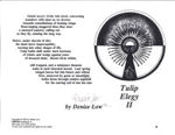 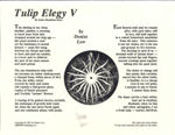 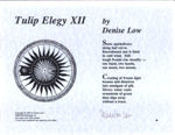
|
Bibliography ( - housed in Thomas Fox Averill Kansas Studies Collection) - housed in Thomas Fox Averill Kansas Studies Collection) |
|
| |
- The Turtles Beating Heart: One Family's Story of Lenape Survival (American Indian Lives) (Bison Books, 2017)
 Jackalope (Red Mountain Press, 2016) Jackalope (Red Mountain Press, 2016)-
 Melange Block (Red Mountain Press, 2014) Melange Block (Red Mountain Press, 2014)
-
 The Lenape Code: Cultureal Persistence (Mammoth Publications, 2013) The Lenape Code: Cultureal Persistence (Mammoth Publications, 2013)
 Natural Theologies: Essays about Literature of the New Middle East (The Backwaters Press, 2011) Natural Theologies: Essays about Literature of the New Middle East (The Backwaters Press, 2011)-
 Ghost Stories of the New West (Lightning Press, 2010) Ghost Stories of the New West (Lightning Press, 2010)
 To the Stars: Kansas Poets of the Ad Astra Poetry Project (Mammoth Publications, 2009) To the Stars: Kansas Poets of the Ad Astra Poetry Project (Mammoth Publications, 2009)-
 Words of a Prairie Alchemist (Ice Cube Press, 2006) Words of a Prairie Alchemist (Ice Cube Press, 2006)
- Langston Hughes in Lawrence: Photographs and Biographical Resources (Mammoth Publications, 2004)
 Thailand Journal (Woodley Press, 2003) Thailand Journal (Woodley Press, 2003)- New and Selected Poems, 1980-1999 (Penthe Publishing, Lawrence,
1999)
-
 Touching the Sky: Essays (Penthe Publishing, Lawrence,
1994) Touching the Sky: Essays (Penthe Publishing, Lawrence,
1994)
-
 Tulip Elegies: An Alchemy of Writing (Penthe Publishing,
Lawrence, 1993) Tulip Elegies: An Alchemy of Writing (Penthe Publishing,
Lawrence, 1993)
 Cottonwood 48 (Cottonwood Magazine & Press, 1993) Cottonwood 48 (Cottonwood Magazine & Press, 1993)-
 Vanishing Point (Mulberry Press, Wichita, 1991) Vanishing Point (Mulberry Press, Wichita, 1991)
- Selective Amnesia, then in Stiletto One (Howling
Dog Press, Lawrence, 1988)
-
 Starwater (Cottonwood Press, University of Kansas, Lawrence,
1988) Starwater (Cottonwood Press, University of Kansas, Lawrence,
1988)
-
 Quilting (Holiseventh Press, 1984) Quilting (Holiseventh Press, 1984)
 A Confluence of Poems (Cottonwood Magazine & Press, 1984) A Confluence of Poems (Cottonwood Magazine & Press, 1984) Spring Geese ( Museum of Natural History, 1984) Spring Geese ( Museum of Natural History, 1984) - Dragon Kite, in Mid-America Trio,
(BookMark Press, University of Missouri-Kansas City, 1980)
Return to Top of Page
|
|
|
|
Three Poems, Chosen by Denise Low-Weso |
|
| |
"Osage Beach Sonnets" For Tom
1.
Time collapses as we walk mountains
and find hand-worked chert edges
among the jumble of wrecked boulders.
Form shatters into edges, reforms into use,
falls away again into broken bird points.
The afternoon stretches into a labyrinth:
which path around that scrub oak?
What turns before we leave each other?
A new moment arises among geodes
at our feet—crystals folded into matrix.
We find surprise seized in our hands,
like a rockslide caught against slope,
like stone eroding into sandy grasslands
where fits—the soft wet print of a panther.
2.
Chert—alabaster white, luminous
against dirt, blocky chunks, and blades
scattered, accidentals among tree roots:
we walk among knives, step carefully
as we speak, breathe with the mountains
as they rise and fall, old Aux-Arcs.
Some veins of the stone giant run red
as our own blood, ferrous seams
broken from rock spine underfoot,
rosy as the soft damp of your mouth.
We are rouged by the same mother
as this expanse of Cambrian boulders.
These few lavender flints fell from stars
millennia ago, into these colorless waters.
3
The steps lead eastward and downward
from the young Colorado mountain range,
to spread of silty plains among foothills,
into oak savannahs and coal beds, deeper,
farther back into the worlds before this one
with simpler life forms—mussels—and
then silence in the stone tombs underfoot.
We walk through catacombs of time
this spring afternoon, near each other,
far from each other, small streambeds
for trails, no wind but then some crows,
deer tracks, and a distant panther chokes.
On the hike up rocks this could be the day
we first met. Or a day nothing happened.
4.
In river country flint nodules rest
among limestone sea bottoms, unexplained,
glassy among the porous tangles of shells
and ferns and crinoids. Spring storms unearth
campsites laid over ancient wreckage,
fresh water washing over dried-out depths
and thousand-year-old tools. We stop
as two geese part the clouds and murmur.
Below, we find a woman’s hide scraper,
bone-white, hand-sized, and decide whether
to leave it to the rain or carry it farther
into this world. Far from mountains
we move more slowly, see horizons,
turn to the sky for tides and lights.
© Denise Low-Weso
"Menominee Rez, Sunday Morning"
Church bells ring and rez dogs
sing tenor. We cross St. Joseph’s
back to the forest, past two boys
rolling toy trucks in a yard.
Peals and wolf howls rise
like drifting pine smoke.
At the logging road we find
a buffalo nickel key ring
and Marine Corps tags.
Ripe cattails ring a dry pond
where seven clans gathered
years before French Sundays.
Last night, stars streaked
the black void but now blue
spreads thin like a Great Lake
misplaced in the sky. Sun burns
through needles, silent
as it pierces all our eyes.
© Denise-Low Weso
"Elk Medicine"
That male elk across the creek
wooed the dozen females
and made their calves.
They sprawl the meadow.
He looks up, lowers his antlers,
grazes another mouthful.
Then looks again.
One of the last cows
goes to ground. Rests maybe
as the herd drifts to water.
She stays while they wade.
Finally, sun lower, she rises—
and her damp, unsteady child.
His powerful medicine.
© Denise Low-Weso
Return to Top of Page
|
|
|
*Author Interviews |
|
| |
What inspired you to begin writing?
I grew up in a household of readers and books. My maternal grandmother
wrote poetry. My mother valued education highly and pushed me to
do well in school. The rock stars of our house were writers, and
William L. White was an active national writer in Emporia when I
grew up. I was the youngest of four children, and so I heard all
these conversations about politics and the arts around me since
I was very
small.
What do you feel your greatest inspirations have been in your
years of
writing?
I think of some folks who threw out lifelines at crucial moments,
like Marjorie Sullivan, who was a high school English teacher; James
Bogan of Univ. of Missouri-Rolla, who published my very first poem;
Victor
Contoski, who was my first professor of creative writing at K.U.;
Dan Jaffe,
Stephen Meats, and Philip Humphrey—all of whom published early
books.
There are many more, but These are some of the folks who caught
me at crucial
moments and helped me keep going. The Kansas Arts Commission awarded
me
a fellowship in 1991 when I was truly about to give up the quest.
When did you first take yourself seriously as a writer?
Well, I’m trying not to take myself TOO seriously ever. I
think a humble, open
consciousness—that openness to surprise—is the first
requirement for my writing.
I try to keep learning. This is a process and a way of life, not
an achievement
to reach a certain age and have a certain amount of recognition.
I read that you are a fifth generation Kansan. In what ways
has living
in Kansas, and your Kansas heritage, shaped your writing?
Kansas has shaped my language. It has shaped my diurnal rhythms.
It has
shaped my sense of height and depth spatial awareness. All these
feed
the writing. I have a less urban and less narrative sense of poetry,
I
believe, than folks from big cities. Kansas is the West, and although
often
considered the Midwest, I find myself more comfortable in the West
than in the East.
If I look at this question from another direction, I would have
to say
I am grateful for the fine basic education I received in public
schools,
from kindergarten to the PhD. This is a kind of miracle, and as
the gap
between rich and poor widens, I hope this opportunity is still available
for
Kansans from working class backgrounds like myself. I have been
blessed
by having the opportunity of a good education.
You’ve read a lot of Kansas poetry. Do you feel that
there are any
characteristics or themes common to the works that you’ve
read?
In general, it is hard for Kansas poets to ignore the sky, the weather,
the individualistic characters, and the history of the state. Stars
are in
there also. I find the most “Kansas” poets are ones
like Patricia Traxler,
Steven Hind, Harley Elliott, John Moritz, William Stafford, Bill
Sheldon,
Jonathan Holden, and Caryn Goldberg. They all connect to visual
imagery.
They use amped-up vernacular language. They situate the narrators
of their poems within a large natural cosmos. The narrators of their
poems
live within small communities where no one is anonymous.
That’s a start. Those on the more Kansan end of the continuum
probably
have a sly, understated humor that simmers just below the surface.
Is it possible to define a “Kansas Poet?”
That gets into some questions about whether or not it is possible
to
define anything, especially with words, and always there is some
slippage.
I can group writers into categories and find some shared concerns
and
shared forms. I can find some who do not naturally fit. I have watched
the career of Albert Goldbarth. He is totally from another part
of the
country—Chicago—and another culture—Chicago. Yet
the longer he is in
the state and survives the Arctic winters and Saharan summers, the
more
Kansas creeps into his writing. We begin to hear about him attending
a high
school reunion in a small Kansas town. This becomes another strand
in his
complex, polylogic word-inventions.
How long have you been teaching at Haskell University? In what
ways
does being a professor affect your writing?
I’ve been at Haskell since 1984. It is so much part of my
life that I cannot
separate out how it affects me as a separate piece of my life. I
have had to
learn a lot about the individual-community dynamic. I have had to
learn
my various ethnic flavors within my own heritage and how to co-exist
with
them. I have been privileged to learn ways of thought that fit my
experience
more closely than European-American worldviews. Since I had some
great-grandparents who had Native heritage but tried to assimilate,
I feel I
have been able to recover some part of my family and personal identity
from the experience at Haskell. I have also learned how very European
some
of my identity is. In short, I hope to be an asset to Haskell and
bring them
honor, and if my writing is a means for that, I am grateful.
Are there any favorite authors who have influenced your work?
Louise Erdrich, Susan Power, Leslie Marmon Silko, William Stafford,
William Burroughs, Allen Ginsberg, Rilke, Mary Oliver.
Congratulations on being named the next Poet Laureate of Kansas!
What
are some of the goals that you hope to reach in the next two years?
Creation of a Kansas Poet Laureate in 2005 is bringing recognition
to
our state’s rich literary history. Jonathan Holden has done
a wonderful job
of inaugurating the Poet Laureate position and creating the role.
As Poet Laureate, I will do my best to follow his lead in maintaining
a web site presence, making appearances, and coordinating with state
and other organizations dedicated to furthering Kansas poetry and
poets.In addition, I have talked with the Center for Kansas Studies
at Washburn University about an Internet and print media project
that would result in an anthology of Kansas poets. The Kansas Ad
Astra Poetry Project would begin with a weekly e-mailed poem by
a Kansas poet, to be delivered to libraries, schools, and other
subscribers and also published on the Kansas Poets website. Libraries
and schools would be encouraged to print out copies to post. I would
select from living and historic poets and include short biography,
the poem,
and commentary. At the end of the term, the Center for Kansas Studies
is
interested in printing the collection of these pieces as a representative
publication of Kansas poets. No other collection of Kansas poetry
has been
done since my own Confluence of Kansas Poets in 1984, twenty-two
years
ago. Such publications play an important role in education of students
and
the public. As a visiting professor at the University of Richmond
last year, I
relied on the University of Virginia Press’s Common Wealth:
Contemporary
Poets of Virginia as an introduction to the state and as a textbook.
I would
like to be able to provide my state with an equivalent resource
for students,
poets, and readers. This anthology can be distributed to school
and public
libraries across the state, according to the Center for Kansas Studies.
I have
talked also with the Kansas Center for the Book about working with
their
programs and also the State Library, and the Governor’s Council
on
Cultural Affairs. Numerous possibilities arise to promote poetry
in the state
of Kansas: the Kansas Book Festival; programs of local arts agencies,
such as the Salina Arts and Humanities Council and the Solomon Valley
Arts
Alliance, where I have recently supported events; Poetry Out Loud,
sponsored
by the National Endowment for the Arts. I am interested in encouraging
historians and literary scholars interested in studying and preserving
Kansas
poetry, Kansas Folklore Society, Great Plains Studies Center (Emporia
State University), Center for Kansas Studies (Washburn).
*Miranda Ericsson interviewed Denise Low via E-mail on December
8, 2006
And here is a long interview of Denise Low by poet William Sheldon.
Return to Top of Page
|
|
|
|
Links |
|
| |
Read Denise Low's blog at deniselow.blogspot.com/
A really nice page about Denise Low’s writing
and her work as an editor, by Robert Lawson of Woodley Press. Includes
a poem from her collection Thailand Journal and a poem from Selective
Amnesia.
http://www.washburn.edu/reference/bridge24/low.html
Langston Hughes in Lawrence: Photographs & Biographical Resources.
A web page by Denise Low and T.F. Pecore Weso about the book Langston
Hughes in Lawrence. This site has photos and selected pages
from the book.
http://www.kansashistory.us/langstonhughes.html
The first Poet Laureate of Kansas, Jonathan Holden, praises Denise
Low’s book Words of a Prairie Alchemist: The Art of Prairie
Literature. This site will soon feature video of Denise Low from
the Shoptalk Series with Jonathan Holden. http://www.kansaspoets.com/shoptalk_programs/st_low_denise.htm
Denise interviewed James Mechem, beat poet and native Kansan, in
2003.
http://www.vlib.us/beats/mechemlow.html
A drawing of Denise Low by Ted Watts (1981), and a calendar of
William Stafford-Denise Low correspondence available at the Leonard
H. Axe Library at Pittsburg State University in Pittsburg, Kansas.
http://library.pittstate.edu/spcoll/stafford-low.html
Mammoth Publications web site
Denise Low on Wikipedia.
http://en.wikipedia.org/wiki/Denise_Low
"Place" by Denise Low from a pamphlet from A Geography of Kansas Poetry
Review of expanded edition of Kansas Poems of William Stafford, edited by Denise Low, in Kansas Alumni.
Stafford Low Kansas Poems correspondence Return to Top of Page
This page was constructed by Miranda Ericsson in 2007
Last updated November 2016 |
|
|
|

